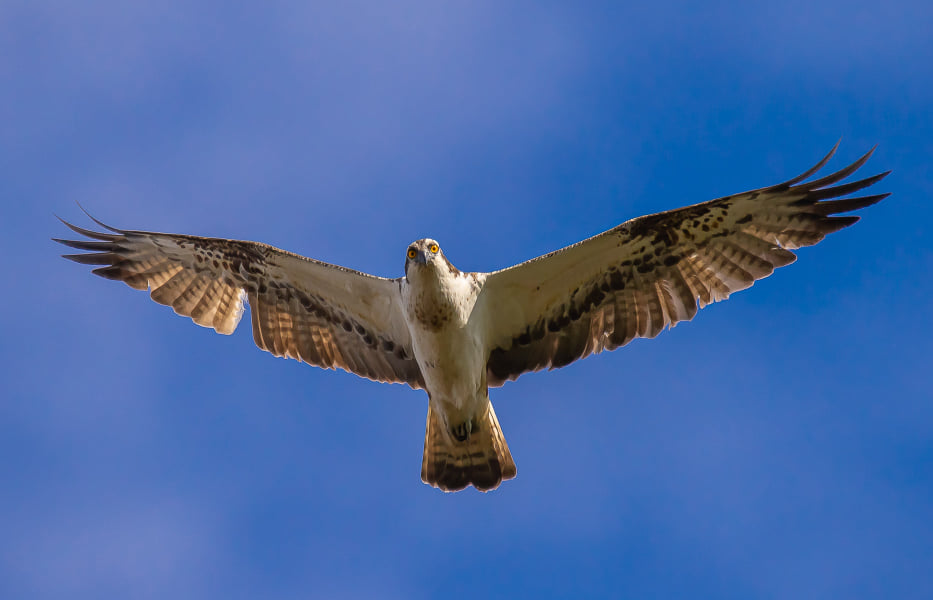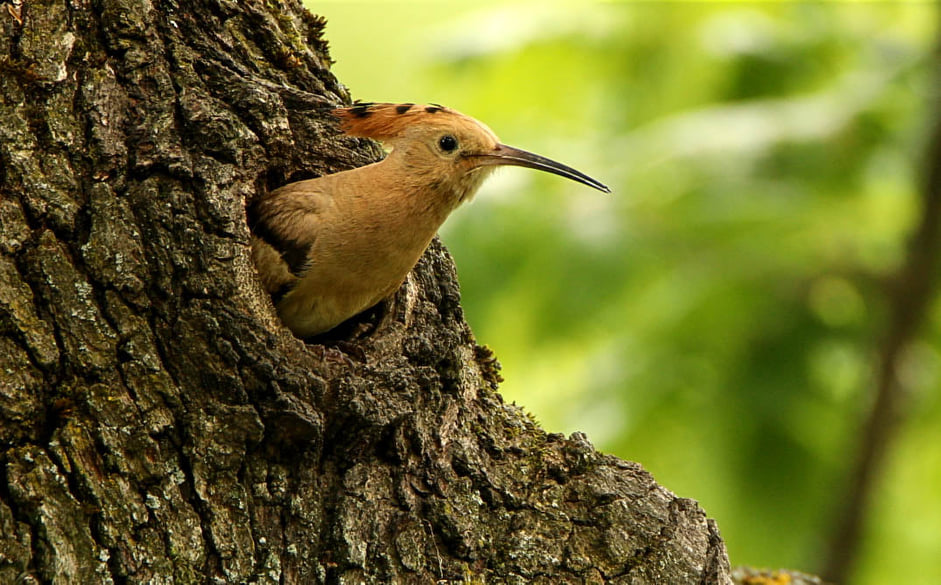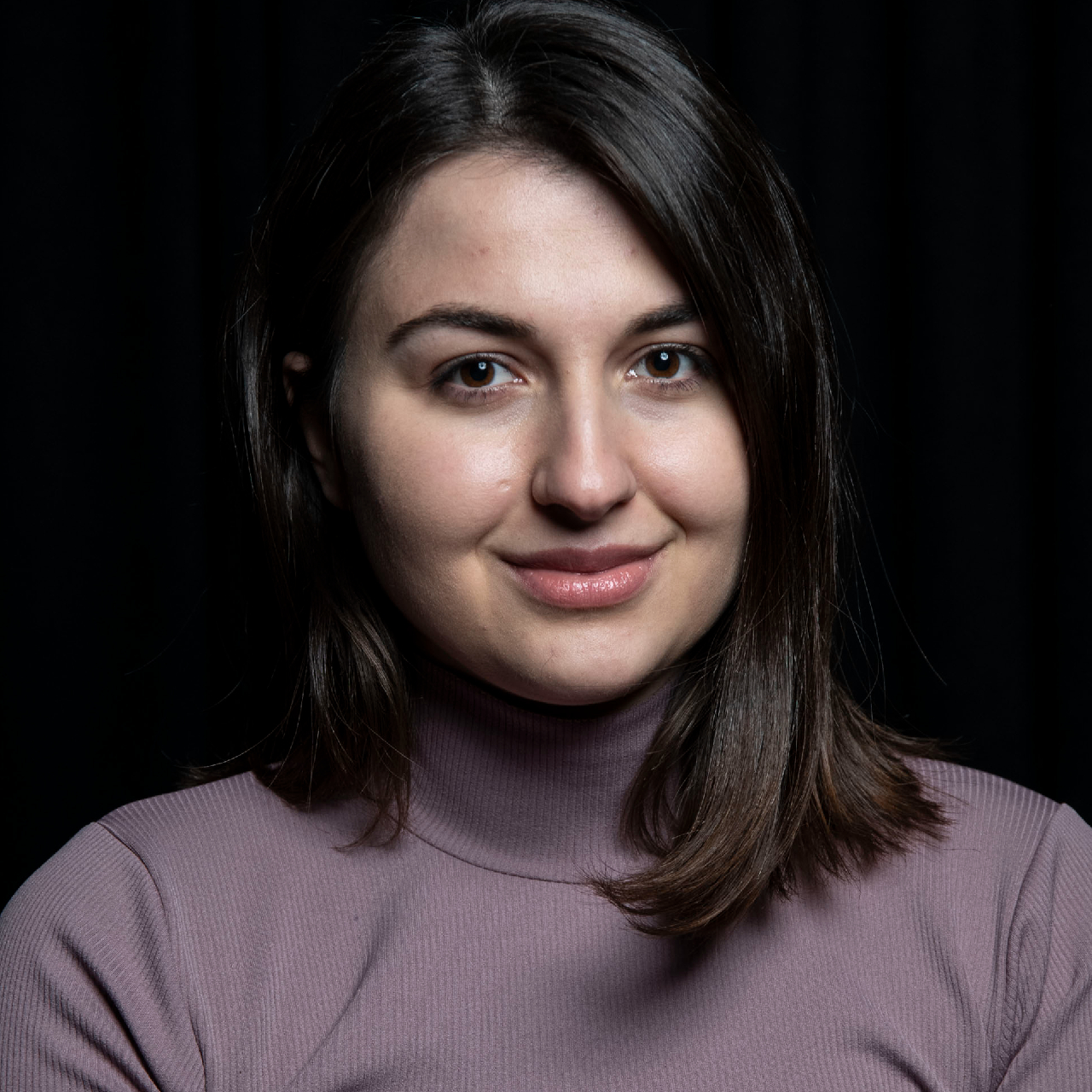Arian Mavriqi, a photographer from the small town of Kamenica, has documented the wild world of birds and animals in the city and elsewhere in Kosovo since 2012. He uses social networks and his show “Wild Life with Arian Mavriqi” on Radio Television of Kosovo to promote biodiversity in the country and to increase knowledge about endemic species.
Life in the big cities, with all the opportunities and economic prospects, did not suit Mavriqi, and not just because of the noise and chaos. Since childhood he showed interest in wildlife and photography. This kind of passion cannot be satisfied in cities full of wild buildings; this wildness is not the kind that Arian seeks out. The rougher, natural and living wilderness that he loves can only be found in the mountains.
Although for other people the day may start at eight o’clock in the morning, for Arian this is already late. His day begins at six in the “sabah” (the Arabic word for morning), as he calls it. At this time he takes the road to one or another mountain trail in different parts of Kosovo — a routine that he has been following since the beginning of his career.
For him, the scant information on wildlife in the country was the main push to turn it from passion to an actual profession.
In a conversation with K2.0, Arian talks about the moment that makes a photograph special and the necessity of knowing about bird nests before trying to catch them with his camera.
K2.0: When was the starting point of your interest in photography?
Arian Mavriqi: This passion started in the ’80s, when I was a child. The place where I live, Kamenica, is surrounded by mountains, we have a river through the city, the Crooked River, we also have a lake. That gives us a chance to have good opportunities for wildlife, for the ornitofauna, that is birds and wild animals. When you are a child and constantly see them, you notice that you want to reflect their life. I couldn’t at that time because I did not have the right tools and it was not a time when you could do it.
Why couldn’t you obtain the right tools? As I heard in an interview, owning a camera at the time was a big problem.
It was a big problem, I still have issues today, for example I still cannot photograph in the areas where minority communities live because of prejudices. A while ago someone approached me and asked why I was photographing. It seemed absurd to him, I was trying to capture [images of] birds in the sky, but I was close to his private space. If we still have problems today, just imagine 30 years ago. Having a camera was a challenge because you could be interrogated. You could very easily be accused of espionage or something, since the regime was as it was. But even if you had the opportunity, it was a risk and a challenge.
Then after the war, in 1999, I started working as a journalist at Radio Kamenica. It was with the funding or donations from the American KFOR and UNMIK. I worked there for six years, and then another six years as a coordinator at the Multiethnic Youth Center in Kamenica. Two joint [international] organizations funded the Youth Center for the Establishment of Good Interethnic Relations and had different programs for all the ethnic groups living here, organizing various sports games, languages [courses] for people that wanted to learn languages, art and others.
In 2012 we lost our jobs, the organization closed down in February. I had a place of my own, [where I stayed] for a year. I rediscovered my passion for documenting the fauna there. When I was a child, all I could do was talk to my mother and tell her that I saw some birds, some particular species, but nothing more. Just describing their color, their flight, but not their way of living. I had no information, almost nothing, for ornithology, the science that deals with the study of birds. So I had almost no information at all about birds.
So in 2012-13 I started to return to the passion. I initially started my career as a photographer with a mobile phone, a Galaxy S4 at that time, photographing some insects and landscapes. I even used a method of my own; I left the phone in a sparrow’s nest, this was the only method to catch it for a few seconds, and then came back after a few minutes to check the phone. I had no other options, I didn’t have a professional camera.
Then I saw that people have no idea about wildlife, about the species that live here. I will never forget when in 2014 I posted a picture of a night heron, and in two or three months, no one was able to answer which species it was. At that moment I realized that there is a lack of information and I started to dedicate almost 100% of my work to wildlife photography.
I bought a camera with an adequate lens to catch them and I posted the photos on social media; people were amazed by the species we have, the media started to contact me and many interviewed me. They were interested in the places where I photographed, to find out if they are real.
In 2015, I held a photo exhibition of my own, where many people speculated that the photos were not mine and I got them on Google.

An osprey caught by the lens of Arian Mavriqi.
In this age we seem to be obsessed with photography. More than ever, we see images from the most diverse places, from personal photos on social networks or in the media to those of professional photographers who capture special moments. But we are most obsessed with our own pictures, whether of ourselves or of something around us. In your opinion, what is happening with the art of photography today?
The possibilities are much better, people have the opportunity even with a mobile phone to take quality pictures. Nowadays everyone has a camera, I often take photos of landscapes with my mobile phone. But most photographers lack that artistic eye, I’m afraid they’re just taking it to do a shot, to be the first, but without looking at the quality or the artistic side, which is not good. It is important for every photographer to know what they are aiming for with their photographs, to pay attention to the details that make good photographs, not just getting done with it however. Currently there are many photographers, but unfortunately, little quality.
I believe the opportunities are tremendous now. You can just check on Youtube for the genre you like, you have thousands of videos that give lectures on how to be a photographer or what is artistic. The possibilities are much more real than when there weren’t all the tools. You know, from those who were studying photography or art [at university in the first years after the war], only a few owned a book, the rest copied it from one another. There are also many facilities, now you can review a picture, see whether it is good or not and take it again, something you couldn’t do before. You shot it, if it did turn out good or if it failed, that was it, it was over!
Whenever someone asks me about my profession, wildlife photography, I always reply, and what I say is that there really is not just one correct way of doing things, you just need the will.
What is particular or unique about wildlife photography compared to other types of photography?
There is a special technique for photos of wildlife, for birds. Because photographing a bird that goes maybe over 200km per hour in flight speed is not the same as photographing a man sitting and facing you. Wildlife photography is the most difficult style of photography to execute. It requires a focus on the animal, on the details of its colors, its way of flying. For example, I also do videos because I want people to hear the animal’s sounds, to get more into the situation. Sometimes it depends on what you really want to capture in the photo, but in most cases you need to frame the animal just right.
When you decide to photograph, let’s say, a stork, are you first interested in its habits, for example the time it migrates, or in the context of its life before you wait for the moment to capture?
At first we [photographers] get information, because sometimes you can disturb the animal, creating more problems than doing good. We never go too close, especially near the nests; we have to limit where we dare to approach for the picture, and we get information constantly. We don’t need it that much now because we have learned [this information about different birds], it is very important to learn and remember. But, thankfully we have people to answer our questions, to teach us their migration periods. For example, when the osprey returns, it passes through Kosovo for a period. It is temporary, so you need to know the right time to go and photograph it. Now you cannot, you won’t find it in winter.
So you gather the information about where they stay, where they feed. In some form we coexist until we capture the moment. You coexist and learn the places, the nests, and you know how to distinguish some holes, for example which one belongs to the woodpecker, which one belongs to the hoopoe, which one belongs to the bee-eater. Some nest in holes, but then which ones, or in what trees, or in different ponds or bushes. All these are different, you just have to learn about what you want to photograph.
As a photographer, what distinguishes photographs with the potential to be unique from ordinary ones? What are the methods you use to capture a particular moment, and is it challenging to do so?
The moment. It is very important. Because the photograph will distinguish. An artistic photographer easily distinguishes the reason for an unique picture from an ordinary one. Simply, the photographer must find the most unique moment possible. It can be a child crying for something or an old man hugging his niece or nephew. It’s an artistic moment, as opposed to capturing the moment between two presidents shaking hands. All these moments are different, I think this is something that should be kept in mind.

A hoopoe caught by the lens of Arian Mavriqi.
In your work, photography and environment coexist. But, as the technique of photography is advancing more and more every day, on the other hand the environment is degrading. Your photos introduce us to creatures that are probably endangered by climate change. How much do you try to use your photography to promote positive environmental changes?
My posts on social networks are always linked with cleaning the environment. I just did a video yesterday about the removal of a dead dog from the river of the city in Kamenica. Every day my children and I go together and clean different places. My mission is not only photography but also intervening where it’s needed. I have always conveyed my message through my photography, for example that picture where a stork has built its nest and almost 30% of it is made of litter.
I always try to show that roughness through photos, but also the beauty of this place. The state should intervene, but first we should, because we also have to change ourselves and then move it to the state level. You don’t only have to shoot, but you can also clean the surroundings and send a message on your own initiative.
Do you feel bad when you see animals and birds living in those environments?
It hurts your soul, it tears it apart. But I believe we are on the right track to make people aware. We need to have ongoing initiatives; we have to first believe that we can change the situation. Then results definitely will come. I am optimistic that with our photos, with the videos, the situation is changing. For me, it is a pleasure when a hunter calls me on the phone, and tells me “I was targeting a roe deer but I didn’t want to kill it. I just remembered you, Arian, your posts and photos, I felt ashamed to shoot it.” This is important. The impact of photography. The message it conveys to the people, whether it is about the environment or illegal hunting or whatever.
While capturing animals through your lens, whether through photography or shooting, it seems that your goal is not just to capture an image, but also it is as if you want to shed light on their way of living, which seems to impress you. Which has come first for you, the passion for wildlife or photography?
I think both. When I started I realized that I am not for an urban life, full of noise, of cars. I am for a town like Kamenica, quiet, where you can see the birds, live with them every day. For me, that automatically creates the desire to document it. I cannot separate these two things; they go so well with each other that it is impossible to separate.
It is known that in our country photography finds little institutional support while the tools for professional photography cost quite a lot. How much does it cost you to secure all of your tools?
I spent a lot and gained a little. Unfortunately, photography and documentary work are still not counted as worth investing in. We are hoping, but so far we have had very little support, minimal, which is a very big problem for us, unfortunately.
Apart from the Ministry of Culture, the presidency, the prime minister and the speaker of parliament could all have a budget line to help us. We could put our fauna in the biology books with our own photographs, the very ones we have captured ourselves.
This article has been edited for length and clarity. The conversation was conducted in Albanian.
Feature Image: Ferdi Limani / K2.0.


Hello as a documentarist i would like to meet Arian.I will be in Kosovo for filming nov.7 Thanks for your answer. Helios